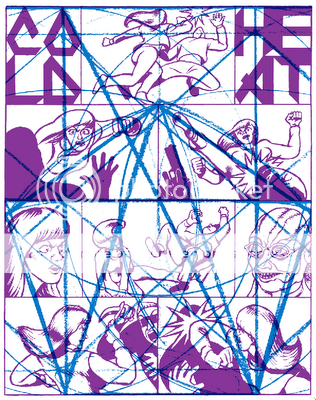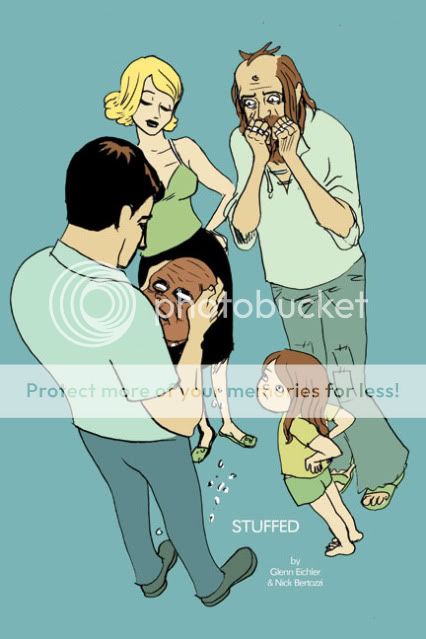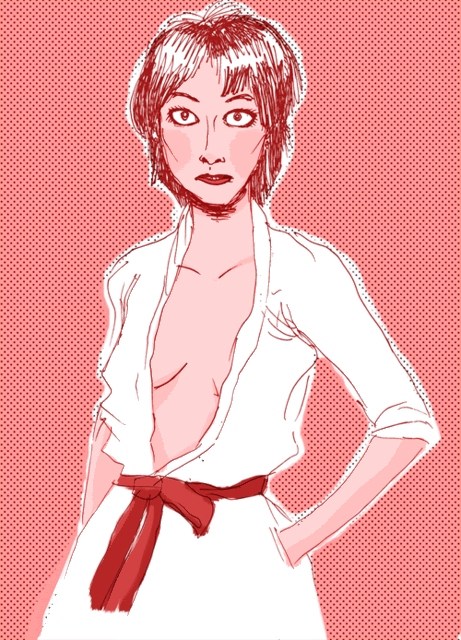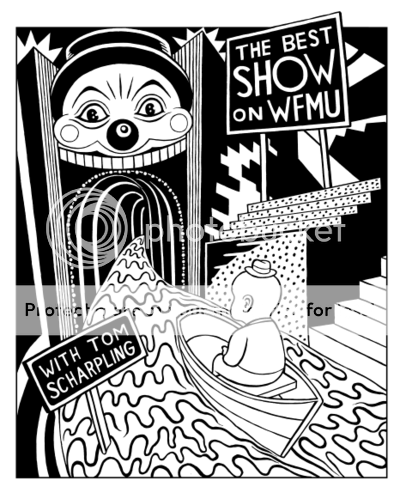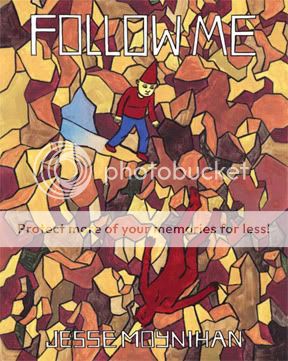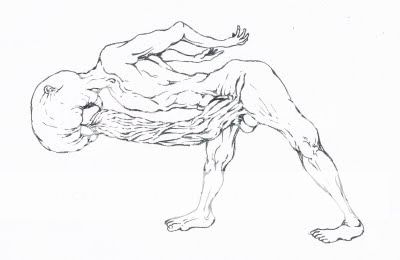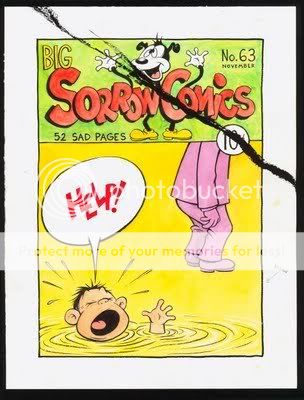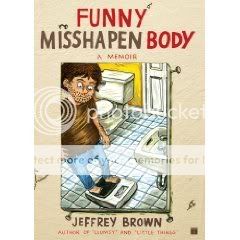New Moon isn’t really a better movie than Twilight, but it’s a lot more fun. I’ll grant you that seeing it on opening night contributed a great deal to that impression, I’m sure. Now, I’m a neutral party in the big Team Edward/Team Jacob dust-up; I wore a Twin Peaks t-shirt to the screening, so I guess I’m on Team Bob. Still, many of my favorite moments of the evening didn’t take place on screen. There was the shaggy-haired kid with the Judas Priest t-shirt we sat next to, clearly dragged along by his female friends–when we asked if he minded us sitting between him and them, he said “Oh, it doesn’t matter, I’ll probably be asleep through the whole thing anyway”; later he responded to a parodic film-within-the-film action flick by shouting “I wanna be watching that movie!” There was the high-pitched squealing any time a male teenage character (or Ashley Greene’s Alice, for some reason…?) came on screen, doubled in decibels anytime one of them took his shirt off. In that respect it was really 17-year-old Taylor Lautner’s show–when his buff, bare-chested teen-wolf character Jacob spent a scene glowering topless in the rain, there wasn’t a dry seat in the house. And there was the Twi-mom we overheard in the parking lot loudly proclaiming of Lautner (to the chagrin of her daughter), “Six-pack? More like an eight-pack! Believe me–I was counting!”
But even if our screening’s highlights came from the audience and not the film itself, that’s not to say that the film wasn’t a hoot at times too. Sure, I may have gotten more out of scarfing down pretzel bites and nacho cheese and giggling at every collective screech and sigh from our tweenage theater-mates. But don’t let’s forget that before he presided over the stillbirth of the would-be His Dark Materials franchise with The Golden Compass and subsequently shattered box-office records and Batman-fan hearts with New Moon‘s performance this past weekend, Chris Weitz helped helm American Pie. I for one thought he brought that same eye for the absurdity of teenage emotions’ intensity to this material. Ridiculous tableaux abounded here, from the perpetually shirtless posse of Native American were-twinks to a ride in an elevator with our heroes and a trio of vampire-royalty enforcers that nearly brought down the house. And as in the first film, the four human friends of Kristen Stewart’s lead moper Bella were clearly the movie’s most valuable players, from Anna Kendrick’s motormouth remonstrations as Jessica to Michael Welch’s superbly played hormonal awkwardness as Mike.
Best of all, though, were the Volturi, the Italy-based ruling council for the vampires of the Twilight world. Their apparent top dog, Aro, was played by Michael Sheen with all the gleeful giggling gusto of someone who thought it might be fun to pretend he was in a better vampire movie. He’s a grinning, fey freak straight out of the Emperor Paplatine playbook, an undead dandy, and I enjoyed every second he was on screen. Equally impressive in smaller roles–due in large part to their striking appearances–were Daniel Cudmore as Felix, a towering vampire guard who smashes Robert Pattinson’s emo vampire Edward through a roomful of marble furnishings in Zack Snyder slow/fast-motion style; and Dakota Fanning as Jane, a sadistic vampire teen telekinetic upon whom I’d have developed a crippling crush as a kid. The group is responsible for the film’s one true moment of horror, too, albeit offscreen: As Bella, Edward, and Alice are led from their forced audience with Volturi, a tourist group–complete with prominently shot children!–is led in, and their screams as they figure out what’s going on actually are tough to hear.
The Volturi certainly compare favorably to the misbegotten trio of vampiric antagonists whose boilerplate antics gave the first film its nominal climax, a role augmented since author Stephenie Meyer apparently never really bothered to put one in the book, from what I’m told. Edi Gathegi’s dreadlocked and accented Laurent returns here, pulling an unexplained 180 from his face turn in the first film–something Bella actually remarks upon as he prepares to kill her, but with no explanation forthcoming. He gets eaten by werewolves, which is pretty funny. Faring somewhat better is Rachelle Lefevre’s extravagantly red-headed Victoria, out for vengeance for the slaying of her grungy mate James (Cam Gigandet) by Edward and his family in the first movie. I don’t think she says a single word in this movie–and behind-the-scenes shenanigans have led her to be replaced by Bryce Dallas Howard in subsequent sequels, so oh well–but she makes a hell of an impression in two of the film’s most visually impressive sequences. First, she has a long chase sequence with the wolfpack, choreographed Matrix-style and soundtracked beautifully by Thom Yorke (!). Second, even though this breaks even more vampire rules than the astonishingly dopey “sparkle in the sunlight” thing, she ends up in the ocean at one point, and the two brief shots we get of her in there point to a visually rich vein of “water vampire” fiction should anyone else feel comfortable throwing tradition to the wind.
All that being said, New Moon is still, in many respects, a train wreck. For one thing it’s riddled with plot holes big enough to drive Bella’s truck through. If Edward can read minds, why on earth would he think Alice was “lying” if she tried to stop him from killing himself out of the belief that Bella is dead? Wouldn’t he know, for certain, that she wasn’t? Why did the vampire who helped them in movie one turn evil in movie two? Why is it a big deal Bella can resist Edward and the Volturi’s powers, when she’s perfectly susceptible to Alice and Jasper’s? Why would “exposing himself” make people think Edward was anything but a pale human covered in body glitter? Where do the werwolves stash all those extra shorts?
But as I always say, you can put up with a lot of plot inconsistency if the rest of what you’re getting is entertaining enough. And in New Moon‘s case, there are still way, way too many stilted conversations between Bella and Edward, Bella and Jacob, and even Bella and her cop dad (the character who elicited the loudest squeals from the Missus, fwiw–I believe the phrase “You have the right to remain sexy” was used) that consist almost soley of variations on “no, don’t, can’t, won’t.” For these conversations, the emotional dial seems permanently lodged at “pained intensity.” I wish Weitz, and returning screenwriter Melissa Rosenberg, had taken the time to transmute Meyer’s leaden prose into something approaching genuine teenage interaction, even between teenagers who are painfully in love. It definitely gives Pattinson and Stewart little to work with. They’re both beautiful, but while I’ve heard knowledgeable people make the case that they’re great young actors, you’ll find precious little evidence of it here, unless you’re looking for the most realistically awkward, stilted, and painful pause-laden teenage dialogue since Sofia Coppola in The Godfather Part III. (Seriously, at one point in the middle of one of Pattionson’s lines, he stretched a pause out so long that I was this close to yelling “Say it!” at the screen, Rocky Horror-style.)
Meanwhile, structural problems bedevil the film just as they did its predecessor. There’s not really a climax, since once again the key problem isn’t introduced until about twenty minutes prior to its resolution. And there’s little flow–things are fine, then Edward leaves because of supposedly unavoidable problems that if you’re paying attention were mostly his own fault, then Bella mopes, then she befriends Jacob, then Jacob mopes, then there’s some cliffdiving, then Alice comes back, then Jacob mishandles a phone call, then there’s all the Volturi business, then it’s over. Somewhere, Robert McKee is rolling in his screenwriting seminar.
I’ve written that Twilight looked like the product of people who weren’t convinced they’d pull it off. New Moon, by contrast, looks (and sounds) like a sure thing. It’s much slicker, for one thing–gone is Twilight director Catherine Hardwicke’s jittery rhythm, none-more-blue color palette, and general earthiness, all of which have been known to irk viewers but seem positively art-house compared to New Moon‘s sterile spectacle. Gone too is the great Carter Burwell’s score and its memorable piano-tinkle theme, replaced by run-of-the-mill Danny Elfmanisms from Alexandre Desplat. The soundtrack, by contrast, traded up from Hot Topic to Pitchfork with an array of critic’s-darling indie-rockers–the lead single from Twilight was by Paramore; the lead single here is from Death Cab for Cutie. It helps, believe me, particularly in that awesome Thom Yorke sequence, but its relative gutsiness made me wish the rest of the film had been as willing to take chances.
(Now, what you won’t hear me do in this case is kvetch about Bella’s lack of agency. Regardless of what happens in the other volumes, and regardless of Meyer’s Mormonism and the genuine creepiness of the whole “make me a vampire so I can be Edward’s sister-wife in your weird vampire incest family,” I took Bella’s actions and inactions here as simply the behavior of an emotionally devastated teenager. It’s unfair to dump all the heroines you loved as a teenage girl on her back–just let her mourn getting dumped and use her obviously smitten platonic friend to get over it, as countless teenagers have done.)
So no, it’s not “a good movie.” But I had a great time at the movies watching it. You know? I left feeling like I’d just seen the female-tween equivalent of Road House: pure pandering to its audience’s id, starring a dude who can’t keep his shirt on. You holler at the screen during the fanservice, you cheer during the fight scenes, you cringe during the love scenes, you get to watch a bitchin’ vampire-vs.-werewolf-vs.-Radiohead scene, there’s some cool evil supervampires who act like Lokar from Space Ghost Coast to Coast, the guy who played Colossus reenacts 300 all over Robert Pattinson’s gorgeous flat face, there’s cliffdiving and indie rock and shirtless wolfpacks …Grab your popcorn, count your eight-packs, and enjoy the cultural phenomenon.


